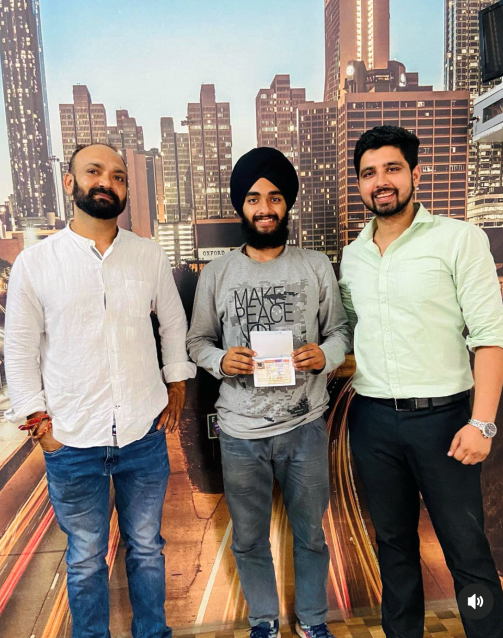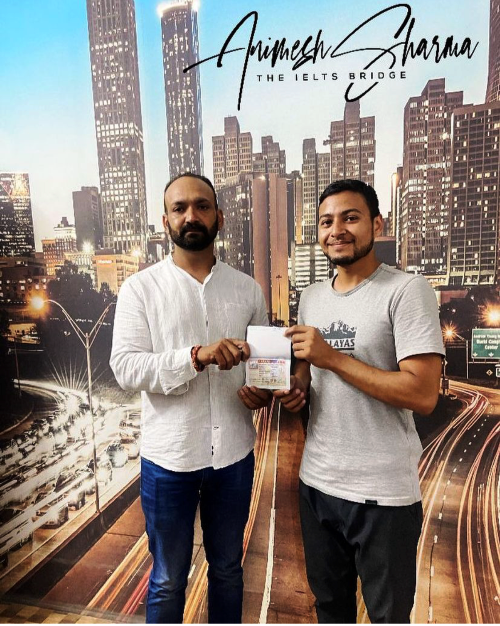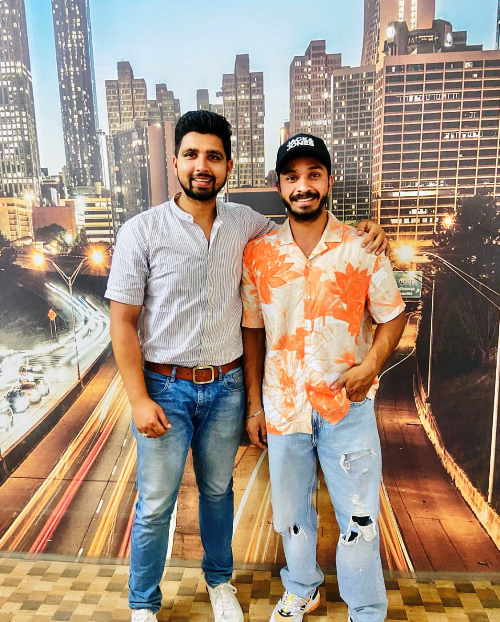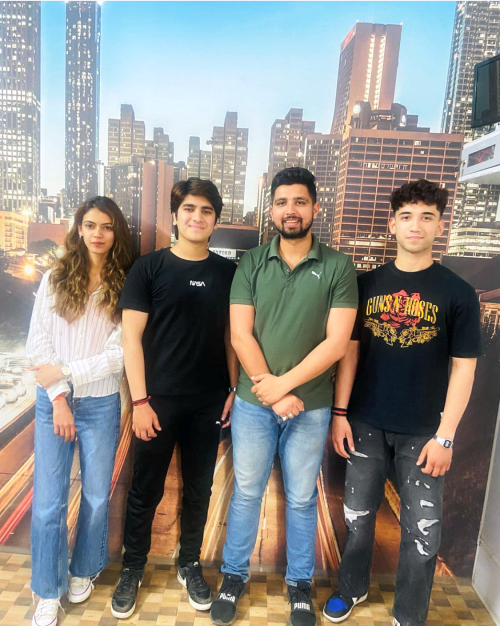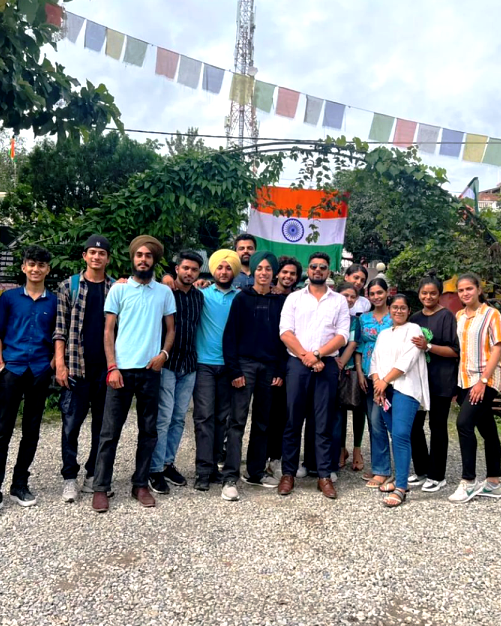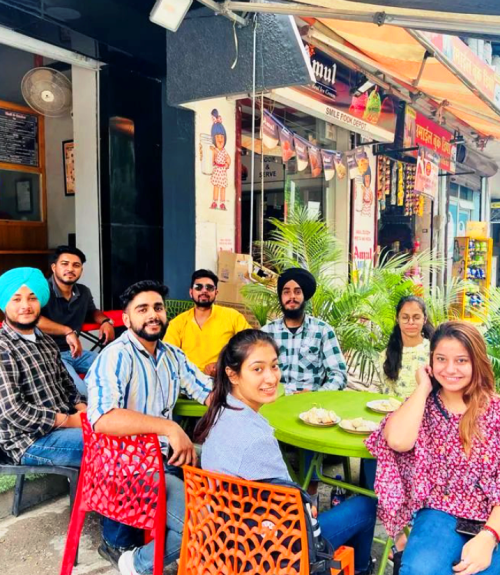Section 1: THE EMPLOYMENT PAGES Saturday Edition
Questions 1-2: Short answer to open questions (NO MORE THAN THREE WORDS)
[In this kind of questions candidates have to answer some questions, only with some conditions like NO MORE THAN THREE/TWO WORDS and/or A NUMBER or, ONE WORD ONLY. Each question has keywords that will lead to the answer. This question type generally follows a sequence.]
Question 1: On which TWO days does the newspaper advertise jobs for teachers?
Keywords for this question: TWO days, advertise, jobs for teachers,
First, take a look at Category B and C in the ‘Saturday Job Guide’ section. They say,
“B. Higher Education (Academic Staff)
- Primary and Secondary Schools (Academic Staff)”
Then, in the ‘Monday-Friday Job Highlights’ section, it says,
“Tuesday: Education
Local Government”
Here, the words ‘education’, ‘Higher Education’, ‘Academic Staff’, ‘Primary and Secondary Schools’, all indicate to jobs for teachers.
So, the answers are: Saturday (and) Tuesday (in either order)
Question 2: On which TWO days does the newspaper advertise jobs for nurses?
Keywords for this question: TWO days, advertise, jobs for nurses,
Again, take a look at Category D in the ‘Saturday Job Guide’ section. It says,
“D. Hospitals and Medical (Medical staff)”
Then, in the ‘Monday-Friday Job Highlights’ section, it says,
“Thursday: Hospital and Medical
Government Health Vacancies (New South Wales)”
Here, the words ‘Hospitals’, ‘Medical’, ‘Medical Staff’, ‘Government Health Vacanices’, all indicate to jobs for nurses.
So, the answer is: Saturday (and) Thursday (in either order)
Questions 3-8: Identifying information
[This question asks you to find information from the text and write the number of the paragraph/ categories (A, B, C or D … .. ) in the answer sheet. Now, if the question is given in the very first part of the question set, I’d request you not to answer them. It’s mainly because this question will not follow any sequence, and so it will surely kill your time. Rather, you should answer all the other questions first. And just like List of Headings, only read the first two lines or last two lines of the expected paragraph initially. If you find the answers, you need not read the middle part. If you don’t find answers yet, you can skim the middle part of the paragraph. Keywords will be a useful matter here.]
Question 3: you are looking for a job as a university lecturer?
Keywords for this question: university lecturer,
Have a look at Category B in the ‘Saturday Job Guide’ section. It says,
“B. Higher Education (Academic Staff)”
Here, Higher Education (Academic Staff) = university lecturer,
So, the answer is: B
Question 4: you want to start your own business?
Keywords for this question: start, own business,
Have a look at Category H in the ‘Saturday Job Guide’ section. It says,
“H. Self-employment Opportunities”
Here, self-employment = own business,
So, the answer is: H
Question 5: you want a permanent job in a hotel?
Keywords for this question: permanent job, hotel,
Have a look at Category G in the ‘Saturday Job Guide’ section. It says,
“G. Hospitality and Kitchen Staff”
Here, Hospitality and Kitchen Staff = permanent job in a hotel,
So, the answer is: G
Question 6: you are looking for a job in public administration?
Keywords for this question: public administration,
Take a close look at Category A in the ‘Saturday Job Guide’ section. It says,
“A. Government Positions (New South Wales)”
Here, Government Positions = public administration,
So, the answer is: A
Question 7: you are looking for agricultural work in the country?
Keywords for this question: agricultural work, country,
Take a close look at Category I in the ‘Saturday Job Guide’ section. It says,
“I. Rural Posts (incl. farm work)”
Here, farm work = agricultural work,
So, the answer is: I
Question 8: you are looking for temporary work?
Keywords for this question: temporary work,
Take a look at Category J in the ‘Saturday Job Guide’ section. It says,
“J. Casual work available”
Here, casual work = temporary work,
So, the answer is: J
STANFIELD THEATRE
Questions 9-14: TRUE, FALSE, NOT GIVEN
[In this type of question, candidates are asked to find out whether:
The statement in the question agrees with the information in the passage – TRUE
The statement in the question contradicts with the information in the passage – FALSE
If there is no information on this – NOT GIVEN
For this type of question, you can divide each statement into three independent pieces and make your way through with the answer.]
Question 9: It is possible to book tickets for performances using the Internet.
Keywords for this question: possible, book tickets, using the Internet,
In the ‘BOOKING’ section, there are 4 ways to book seats for performances. Take a look at the fourth way:
“ – on-line
Complete the on-line booking form at www.stanfieldtheatre.com.”
Here, online = the internet,
So, it is possible to book tickets for the performances using the internet.
So, the answer is: TRUE
Question 10: 60-year-olds who want to book in advance have to prove their age to get a discount.
Keywords for this question: 60-year-olds, want to book in advance, have to prove, age, discount,
We can find the mention of ‘over 60s’ in the ‘DISCOUNTS’ section in the ‘Saver’ category in line no. 3, “ .. .. Savers are available for children up to 16 years old, over 60s and full-time students.”
However, there is no information regarding ‘proving their age’.
So, the answer is: NOT GIVEN
Question 11: Someone accompanying a wheelchair user to a performance receives a discount.
Keywords for this question: accompanying, wheelchair user, receives, discount,
The information can be matched in the ‘DISCOUNTS’ section in the ‘Supersaver’ category. The first line says, “half-price seats are available for people with disabilities and one companion. It is advisable to book in advance. There is a maximum of eight wheelchair spaces available .. . .. . .”
Here, people with disabilities and one companion = someone accompanying a wheelchair user, half-price seats = discount,
So, the answer is: TRUE
Question 12: Students can get Standby tickets 45 minutes before a performance begins.
Keywords for this question: get, Standby tickets, 45 minutes before, performance begins,
The information can be matched in the ‘DISCOUNTS’ section in the ‘Standby’ category. We come to know from the ‘Saver’ category that students are eligible.
Then, here in the ‘Standby’ category, the information says, “best available seats are on sale for £6 from one hour before the performance for people eligible for Saver and Supersaver discounts . .. . .”
Here, one hour before = 45 minutes before the performance,
So the answer is: TRUE
Question 13: A group of ten adults going to a performance can claim a discount.
Keywords for this question: group of ten adults, claim, discount,
Take a look at the ‘Group Bookings’ category in the ‘DISCOUNTS’. It says, “ there is a ten per cent discount for parties of twelve or more.”
Here, twelve or more = more than ten adults,
So the answer is: FALSE
Question 14: Theatre-goers who are unexpectedly unable to attend a performance can get their money back.
Keywords for this question: theatre-goers, unexpectedly unable to attend, get, money back,
Right above the ‘GIFT VOUCHERS’ section, there’s a small note that says,
“Please note: we are unable to exchange tickets or refund money unless a performance is cancelled due to unforeseen circumstances.”
Here, we are unable to exchange tickets or refund money = theatre-goers can’t get their money back if they are unable to attend,
So the answer is: FALSE
Section 2: SELF-STUDY TIPS
Questions 15-21: List of headings
[In this question type, IELTS candidates are provided with a list of headings, usually identified with lower-case Roman numerals (i, ii, iii, etc,). A heading will refer to the main idea of the paragraph or section of the text. Candidates must find out the equivalent heading to the correct paragraphs or sections, which are marked with alphabets A, B, C and so forth. Candidates need to write the appropriate Roman numerals in the boxes on their answer sheets. There will always be two or three more headings than there are paragraphs or sections. So, some of the headings will not be used. It is also likely that some paragraphs or sections may not be included in the task. Generally, the first paragraph is an example paragraph which will be done for the candidates for their understanding of the task.
TIPS: Skimming is the best reading technique. You need not understand every word here. Just try to gather the gist of the sentences. That’s all. Read quickly and don’t stop until you finish each sentence.]
Question 15: Section B
In section B, lines 3-6 say, “ .. . .and make sure that you tackle the most significant tasks first, leaving the easier or less urgent areas of your work until later.”
Here, tackle the most significant tasks first = prioritise your work,
So, the answer is: xi (Prioritise your work)
Question 16: Section C
In section C, lines 1-7 says, “ . .. . make sure that you have an area or space for studying. Don’t do it just anywhere. If you always study in the same place, preferably a room of your own, you will find it easier to adjust mentally to the activity when you enter that area. .. . . . ”
Here, make sure that you have an area or space for studying = create a working place,
The following lines support the idea.
So, the answer is: iv (Create a working place)
Question 17: Section D
Take a look at the first few lines of section D, “Make sure that all the physical equipment that you use, such as a desk, chair etc. is at a good height for you. .. .. .”
Here, desk, chair etc. is at a good height for you = sit comfortably,
So, the answer is: v (Sit comfortably)
Question 18: Section E
In section E, the first lines say, “If you are doing a long essay or research paper which involves the use of library books or other articles, it helps to keep details of the titles and authors on small cards in a card box. It is also a good idea to log these alphabetically so that you can find them easily – . .. . .”
Here, keep details of the titles and authors on small cards in a card box = catalogue references,
So, the answer is: ix (Catalogue references)
Question 19: Section F
In section F, take a look at lines 2-4, “. .. .. . If you find a useful article in the library, it is best to make a copy of the relevant pages before you leave. .. .. . .”
Here, make a copy of the relevant pages = Photocopy important material,
So, the answer is: viii (Photocopy important material)
Question 20: Section G
Take a close look at lines 3-6 in section G, “ . .. it may be that you actually need to take your mind right off it for a period of time. ‘Airing the mind’ can work wonders sometimes. . .. ..”
Here, need to take your mind right off = take a break,
So, the answer is: ii (Take a break)
Question 21: Section H
In section H, the answer is found in lines in the first lines, “Similarly, it may help to discuss a topic with other people, especially if you feel that you have insufficient ideas, or too many disorganised ideas. . ..”
Here, discuss a topic with other people = talk about your work,
So, the answer is: vii (Talk about your work)
STUDY CENTRE COURSES
Questions 22-27: Identifying information
[This question asks you to find information from the passage and write the number of the paragraph (A, B, C or D … .. ) in the answer sheet. Now, if the question is given in the very first part of the question set, I’d request you not to answer them. It’s mainly because this question will not follow any sequence, and so it will surely kill your time. Rather, you should answer all the other questions first. And just like List of Headings, only read the first two lines or last two lines of the expected paragraph initially. If you find the answers, you need not read the middle part. If you don’t find answers yet, you can skim the middle part of the paragraph. Keywords will be a useful matter here.]
Question 22: This course would be useful for dealing with letters of complaint.
Keywords for this question: letters with complaint,
The course category K entitled ‘The Customer is Always Right’ says, “An interesting angle – how do you reply to letters from customers? What tone is best and when? How do you achieve results?”
Here, letters from customers = letters of complaint,
So, the answer is: K
Question 23: This course will help you use the libraries.
Keywords for this question:use, libraries,
The course category C entitled ‘Source Material’ says, “How do you gather information for a project or paper? A practical course which looks at sources of information and how to use cataloguing systems.”
Here, sources of information & use cataloguing systems = use the libraries,
So, the answer is: C
Question 24: This course will improve your performance at interviews.
Keywords for this question: improve, performance, interviews,
The course category I entitled ‘The Job for Me’ says, “Written and oral course with simulation exercises using authentic newspaper advertisements.”
Here, Written and oral course indicates to interviews,
So, the answer is: I
Question 25: This course will help you with acknowledging your sources.
Keywords for this question: acknowledging, sources,
The course category H entitled ‘Quote Me if You Must’ says, “The do’s and don’ts of using source material. How to incorporate it into your own work in an acceptable way. How not to plagiarise other people’s articles, books etc.”
Here, do’s and don’ts of using source material & How not to plagiarise = acknowledging your sources,
So, the answer is: H
Question 26: This course will help you improve your reading skills.
Keywords for this question: improve, reading skills,
The course category G entitled ‘Caught for Speeding’ says, “ .. . .. .Simple eye exercises to help you skim and scan. How to be selective on the page. Using headings, topic sentences and paragraphs for easy access.”
Here, skim and scan = reading skills,
So, the answer is: G
Question 27: This course will help you improve your grammar.
Keywords for this question: improve, grammar,
The course category L entitled ‘Tense about Tenses’ says, “For those who worry about their individual words – a look at tenses and other aspects of the language through poetry and song. .. .. .”
Here, tenses and other aspects of the language = grammar,
So, the answer is: L
Section 3:PTEROSAURS
Questions 28-34: Identifying information
[This question asks you to find information from the passage and write the number of the paragraph (A, B, C or D … .. ) in the answer sheet. Now, if the question is given in the very first part of the question set, I’d request you not to answer them. It’s mainly because this question will not follow any sequence, and so it will surely kill your time. Rather, you should answer all the other questions first. And just like List of Headings, only read the first two lines or last two lines of the expected paragraph initially. If you find the answers, you need not read the middle part. If you don’t find answers yet, you can skim the middle part of the paragraph. Keywords will be a useful matter here.]
Question 28: similarities between pterosaurs and mechanical flight
Keywords for this question: similarities, pterosaurs, mechanical flight,
Have a close look at the last half of section J where the writer talks about the similarities between pterosaurs and flights by sailplanes (mechanical flights), “ . .. . . During the flight, sailplane pilots routinely search for places where heat rises from the sun-baked earth, creating hot air currents called thermals. Undoubtedly, Quetzalcoatlus would have used thermals as well, . .. . .”
Here, as well = also,
So, the answer is: J
Question 29: the identification of the type of creature a pterosaur actually was
Keywords for this question: identification, type of creature, pterosaur, actually was,
In section D, have a close look at lines 4-9, “ . . . .. . It was not until 1791 that the great French anatomist Georges Cuvier deduced that the animal was, in fact, a flying reptile, whose fourth finger supported a wing. He named the fossil Pterodactylus, combining the Greek words for wing and finger. . .. .. .”
Here, a flying reptile = the type of creature,
So, the answer is: D
Question 30: conflicting theories about how pterosaurs came to fly
Keywords for this question: conflicting theory, how, pterosaurs, came to fly,
In paragraph F, we find the mention of two conflicting theories about how pterosaurs learnt to fly. The first half of the section discusses what most researchers believed while the last half of the section discusses another theory. Also, take a look at this line in the very beginning of the section, “But how pterosaurs learnt to fly remains a matter for disagreement.” And this line from the middle of the section, “ . .. . Meanwhile, the competing argument holds that . . .. “
Here, a matter for disagreement & the competing argument indicates to conflicting theories.
So, the answer is: F
Question 31: the cause of the widespread destruction of animal life on our planet
Keywords for this question: cause, widespread destruction, animal life, our planet,
Section K describes the massive and destructive calamity hat hit the earth t wipe out different species forever, “ .. . . At the end of the Cretaceous period 65 million years ago, a meteorite or comet slammed into the Earth. That calamity – and other events – wiped out roughly three-quarters of all species, including all pterosaurs and dinosaurs. . .. ..”
Here, wiped out = destroyed,
So, the answer is: K
Question 32: the fact that pterosaurs once existed all over the world
Keywords for this question: fact, pterosaurs, once existed, all over the world,
Section A explains the time when Pterosaurs existed all over the world, “ . … Pterosaurs stand out as one of nature’s great success stories. They first appeared during the Triassic period, 215 million years ago, and thrived for 150 million years before becoming extinct at the end of the Cretaceous period. Uncontested in the air, pterosaurs colonised all continents and evolved into a vast array of shapes and sizes.”
Here, colonised all continents = existed all over the world,
So, the answer is: A
Question 33: the first clear proof that pterosaurs could fly
Keywords for this question: first, clear proof, pterosaurs, could fly,
In section E, take a close look at lines 3-8, “ . . .. Unlike earlier fossils, this new find near the Bavarian town of Solnhofen contained delicate wing impressions, establishing definitely that the extinct reptile was capable of flight.”
Here, establishing definitely = first clear proof, capable of flight = could fly,
So, the answer is: E
Question 34: concrete evidence that pterosaurs hunted their food from the air
Keywords for this question: concrete evidence, pterosaurs, hunted, food, from the air,
The answer is in section G in the last half where the author says, “ .. . .. but there is evidence that they were skilful fliers, capable of catching fish over open water. Proof of this has been found in the fossil of a Eudimorphodon, a 215-million-year-old pterosaur found near Bergamo, Italy. Under a microscope, several fish scales can be seen in the abdomen of the specimen -the remains of the pterosaur’s last meal.”
Here, over open water = from the air,
So, the answer is: G
Questions 35-38: Matching statements with list of people
[In this type of question, candidates need to relate statements which are given by or links to people in the passage. The rules for finding answers to this sort of question are simple. Just find the name of the person and read around it carefully. Then, give a quick look to check whether there is another statement or idea provided by the same person in the text. If there is, check the reference carefully and decide your answer. Remember, the questions may not follow any sequential order.]
Question 35: He refers to the difficulty of determining how pterosaurs evolved without further evidence.
Keywords for this question: difficulty, determining, how pterosaurs evolved, without, further evidence,
Take a look at the first few lines of section G, “‘It’s very difficult to say how pterosaurs changed over time because the earliest fossils we have are of pterosaurs whose fourth finger has already transformed into a wing,’ says Fabio Dalla Vecchia, an Italian researcher. . .. .”
Here, how pterosaurs changed = how pterosaurs evolved, because the earliest fossils we have are of pterosaurs whose fourth finger has already transformed into a wing = further evidence needed,
So, the answer is: C (Fabio dalla Vecchia)
Question 36: He failed to interpret the evidence before him.
Keywords for this question: failed to interpret, evidence, before him,
The answer lies at the beginning of section D, “Cosimo Alessandro Collini, the first natural historian to study the fossil and describe it, was unable to classify it. .. . .”
Here, was unable to classify = failed to interpret,
So, the answer is: A (Cosimo Alessandro Collini)
Question 37: He gave an appropriate name to the first pterosaur that was discovered.
Keywords for this question: gave, an appropriate name, first pterosaur. .. .discovered,
Take a look at section D in lines 4-10, “. . .. It was not until 1791 that the great French anatomist Georges Cuvier deduced that the animal was, in fact, a flying reptile, whose fourth finger supported a wing. He named the fossil Pterodactylus, combining the Greek words for wing and finger. …”
Here, He named the fossil Pterodactylus = he gave an appropriate name to the first pterosaur that was discovered,
So, the answer is: B (Georges Cuvier)
Question 38: He mentions the ability of pterosaurs to take advantage of their environment.
Keywords for this question: mentions, ability of pterosaurs, take advantage, environment,
In section I the writer says in lines 2-6, “ . .. .. ‘Unlike smaller pterosaurs, it could use natural currents to stay in the air without having to move its wings continuously,’ said Paul MacCready, an aeronautical engineer. ,. .. . .”
Here, it could use natural currents = take advantage of their environment,
So, the answer is: D (Paul MacCready)
Questions 39 and 40: Completing sentences with NO MORE THAN THREE WORDS AND/OR A NUMBER:
[In this type of question, candidates are asked to write a maximum of three words and/or a number to complete sentences on the given topic. For this type of question, first, skim the passage to find the keywords in the paragraph concerned with the answer, and then scan to find the exact word.
TIPS: Here scanning technique will come in handy. Target the keywords of the questions to find the answers. Remember to focus on Proper nouns, random Capital letters, numbers, special characters of text etc.]
Question 39: So far, evidence of a total of ____________ pterosaurs has been discovered.
Keywords for this question: so far, evidence, total of, pterosaurs, discovered,
In Section E, the writer states in the middle, “ . . Even though over a thousand pterosaur specimens are known today, .”
Here, specimens = evidence, today = so far, known = discovered,
So, the answer is: (over) a thousand
Question 40: The wings of Quetzalcoatlus measured more than ____________ across.
Keywords for this question: wings of Quetzalcoatlus, measured, more than, across,
In paragraph H we find the description of wings of Quetzalcoatlus in the last few lines, “ . .. . This pterosaur had wings over 11 metres wide, making it the largest flying animal ever known.”
Here, over = more than, wide = across,
So, the answer is: 11 metres/meters



